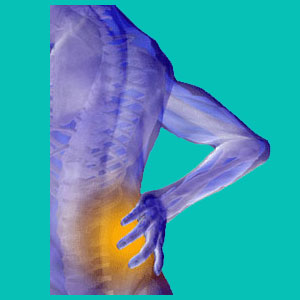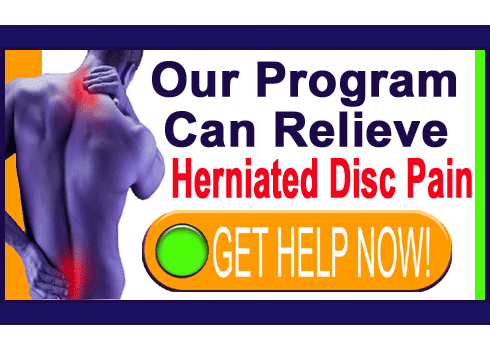
Herniated disc treatments come in a staggeringly diverse selection of modalities, including medical, complementary medical, alternative, all-natural, holistic, surgical and noninvasive methods of care. Herniated discs have the reputation as a chronic and treatment-resistant spinal concern, which has led to the development of some incredibly profitable therapy interventions.
This resource section will provide a comprehensive overview of the state of the industry when it comes to modern herniated disc treatments. It will also provide information on a huge number of specific treatment options worth investigating for many diagnosed patients.
Nonsurgical Herniated Disc Treatments
There are a wide range of conservative non-surgical disc treatment options available for patients who want to stick to conservative care practices. The vast majority of these therapy options are symptomatic treatments. They are designed to relieve pain and neurological effects, but will do nothing at all to resolve the underlying herniation. Patients who are hoping their disc condition will go away on its own might enjoy the use of these therapies as a means of providing comfort during the healing process. Unfortunately, most medical and complementary disc therapies prove unsuccessful in resolving painful expressions, either immediately or eventually.
Spinal decompression is unique among nonsurgical therapies, since it is actually designed to change the physical anatomy of the spine, taking pressure off the herniation. This treatment is not a symptomatic modality and demonstrates excellent permanent curative results for alleviating some types of herniated disc pain. However, its predecessor spinal traction is not so effective and may actually be counterproductive.
Surgical Spinal Disc Treatments
Herniated disc surgery is very common and consists of a wide and ever growing assortment of minimally invasive and fully open spinal operations. There are more options than ever before for treating herniated disc pain with surgical interventions. As always, a patient should be sure to exhaust conservative treatment options prior to even considering surgery. Even the least invasive disc surgeries are still serious considerations and can produce a variety of problematic complications.
Additionally, remember to research all your surgical options very carefully, to make sure you are choosing the best procedure to meet your needs. Generally, it is advised to go with the least invasive option, which will stand the best chance of returning you to a pain-free and fully functional condition.
Remember also that many surgeries might help to relieve pain, but might do so at the cost of your future mobility, flexibility and general functionality. Of all varieties of spinal procedures, those used to treat intervertebral disc pathologies demonstrate the most unpredictable results. This is particularly frightening, since no form of back surgery is known for its efficacy. Learn about all the various herniated disc therapy options before ever considering surgery.
Bulging Disc Treatment Choices
There is a staggering array of disc pain therapies. In order to give patients the most options, we have provided an overview of each herniated disc treatment selection in the essays below:
Herniated disc physical therapy uses exercises and stretches to ward off disc pain agony, although this treatment is purely symptomatic in nature.
Herniated disc drugs can manage pain, but do so at great risk to overall health.
Herniated disc injections can consist of herniated disc epidural injections and/or herniated disc steroid injections. Meanwhile, Herniated disc prolotherapy is yet another application for this organic means of natural healing. A nerve block for herniated discs is one of the more common modalities that can relieve pain, but does not work to resolve the underlying causative mechanism.
Ozone discolysis uses the power of ozone injections to treat disc problems.
TENS for herniated discs can be a professionally-applied or self-managed method of pain control for various types of back and neck pain.
Massage for herniated discs will not address spinal structural issues, but can provide relief from many varieties of symptomatic expressions. Herniated disc Rolfing is a popular type of bodywork that many patients find to be helpful.
Herniated disc acupuncture, as well as the no-needle approach of acupressure for herniated discs, can impart many benefits for disc pain sufferers.
Ice or heat for herniated discs can both be effective home-based care practices. Hydrotherapy is a great way to maximize the effectiveness of hot or cold therapy.
Bed rest for herniated discs might seem like a good idea, but actually is incredibly counterproductive for most conditions.
Herniated disc Alexander Technique can employ postural guidance towards minimizing back or neck pain.
Ayurvedic herniated disc care derives its efficacy from ancient Indian healing techniques.
Inversion for herniated discs is a debated form of spinal decompression that might be dangerous for some, but is a sworn cure for others.
Chiropractic for herniated discs uses spinal adjustments to provide soothing relief from disc-related symptoms.
Make sure to understand the difference between treating herniated discs and curing them. Treatment must continue in order to remain effective, while a cure is a lasting solution.
Be careful of wasting time and money on many of the ineffective herniated disc products on the market today. Many of these products are purchased and used by desperate patients as part of a herniated disc home treatment program.
While not a medical modality, coaching for herniated discs enjoys some of the best patient satisfaction results of any type of professional intervention.
Injections for chemical radiculitis might be the best treatment path for patients with chronic nerve irritation caused by leaking disc proteins.
Mindbody medicine is very effective for curing pain in patients who have been diagnosed with herniated discs.
Traditional Chinese Medicine for herniated discs might allow for effective, holistic pain management, but will never cure structurally-based pain.
Our own proprietary pain relief program is the preferred treatment option for many patients who have enjoyed excellent and lasting curative results.
Guidance on Herniated Disc Treatments
The most important fact to keep in mind when considering treatment is the actual nature of a herniated disc. Most do not cause chronic symptoms, although they are commonly blamed for enacting unresolved pain syndromes. If you have already endured several unsuccessful treatments, take an especially long pause before considering surgery or other drastic intervention. Disc pain will usually get better in 2 to 8 weeks, regardless of whether medical treatment is performed or not. Remember that herniated discs are often used as a scapegoat to easily explain an otherwise idiopathic symptomatic dorsopathy condition.
Do not fall into the trap suffered by millions of other patients. So many are led down a long path of conservative therapies, but experience no lasting relief. Some choose to utilize exclusively all natural herniated disc therapies, but are disappointed with the results.
As their pain continues, they seek progressively more drastic and dangerous herniated disc treatments, but still endure horrific pain. Finally, they acquiesce to an operation, only to find that they still have their pain, but now also suffer from a host of other disabilities directly related to their failed disc surgeries.
The lesson to be learned is a simple one. You must research and understand herniated discs fully before deciding on the best treatment. You must consider all possible explanations for your pain and not simply accept your diagnosis blindly. This is especially true for chronic disc pain syndromes, as they have a tendency of being inaccurately diagnosed, poorly managed and ineffectively treated.






